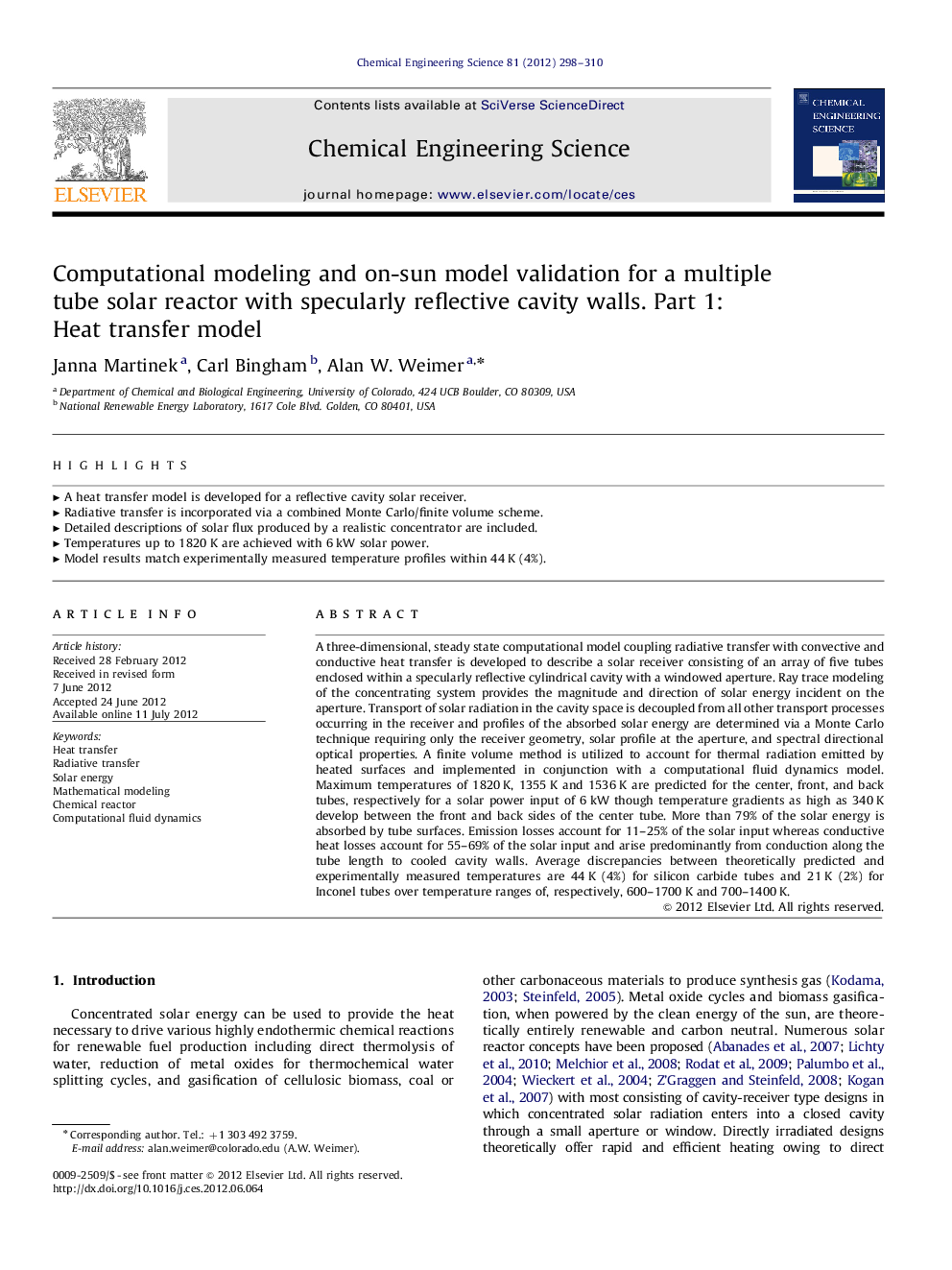| Article ID | Journal | Published Year | Pages | File Type |
|---|---|---|---|---|
| 155526 | Chemical Engineering Science | 2012 | 13 Pages |
A three-dimensional, steady state computational model coupling radiative transfer with convective and conductive heat transfer is developed to describe a solar receiver consisting of an array of five tubes enclosed within a specularly reflective cylindrical cavity with a windowed aperture. Ray trace modeling of the concentrating system provides the magnitude and direction of solar energy incident on the aperture. Transport of solar radiation in the cavity space is decoupled from all other transport processes occurring in the receiver and profiles of the absorbed solar energy are determined via a Monte Carlo technique requiring only the receiver geometry, solar profile at the aperture, and spectral directional optical properties. A finite volume method is utilized to account for thermal radiation emitted by heated surfaces and implemented in conjunction with a computational fluid dynamics model. Maximum temperatures of 1820 K, 1355 K and 1536 K are predicted for the center, front, and back tubes, respectively for a solar power input of 6 kW though temperature gradients as high as 340 K develop between the front and back sides of the center tube. More than 79% of the solar energy is absorbed by tube surfaces. Emission losses account for 11–25% of the solar input whereas conductive heat losses account for 55–69% of the solar input and arise predominantly from conduction along the tube length to cooled cavity walls. Average discrepancies between theoretically predicted and experimentally measured temperatures are 44 K (4%) for silicon carbide tubes and 21 K (2%) for Inconel tubes over temperature ranges of, respectively, 600–1700 K and 700–1400 K.
► A heat transfer model is developed for a reflective cavity solar receiver. ► Radiative transfer is incorporated via a combined Monte Carlo/finite volume scheme. ► Detailed descriptions of solar flux produced by a realistic concentrator are included. ► Temperatures up to 1820 K are achieved with 6 kW solar power. ► Model results match experimentally measured temperature profiles within 44 K (4%).
